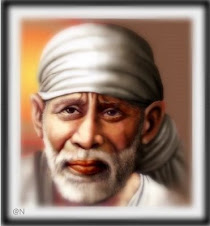
A grinding stone - a common household item in rural India - is kept in the north corner of the western wall. Baba apparently had two or three such stones (another is on display in the Samadhi Mandir) which, on occasion,
One morning, some time after the year 1910, while I was in Shirdi, I went to see Sai Baba at his mosque. I was surprised to find him making preparations for grinding an extraordinary quantity of wheat. After arranging a gunny sack on the floor, he placed a hand-operated flour mill on it and, rolling up the sleeves of his robe, he started grinding the wheat. I wondered at this, as I knew that Baba owned nothing, stored nothing and lived on alms. Others who had come to see him wondered about this too, but nobody had the temerity to ask any questions.
As the news spread through the village, more and more men and women collected at the mosque to find out what was going on. Four of the women in the watching crowd forced their way through and, pushing Baba aside, grabbed the handle of the flour mill. Baba was enraged by such officiousness, but as the women raised their voices in devotional songs, their love and regard for him became so evident that Baba forgot his anger and smiled.
As the women worked, they too wondered what Baba intended doing with such an enormous quantity of flour...They concluded that Baba, being the kind of man he was, would probably distribute the flour between the four of them...When their work was done, they divided the flour into four portions, and each of them started to take away what she considered her share.
"Ladies, have you gone mad!" Baba shouted. "Whose property are you looting? Your father's? Have I borrowed any wheat from you? What gives you the right to take this flour away?"
"Now listen to me," he continued in a calmer tone, as the women stood dumbfounded before him. "Take this flour and sprinkle it along the village boundaries."
The four women, who were feeling thoroughly embarrassed by this time, whispered among themselves for a few moments, and then set out in different directions to carry out Baba's instructions.
Since I was witness to this incident, I was naturally curious as to what it signified, and I questioned several people in Shirdi about it. I was told that there was a cholera epidemic in the village, and this was Baba's antidote to it! It was not the grains of wheat which had been put through the mill but cholera itself which had been crushed by Sai Baba, and cast out from the village of Shirdi.
To this day, a grinding stone is kept in the mosque with a sack of wheat beside it, as it was in Baba's time. This tradition goes back many years and is associated with an early devotee of Baba's, Balaji Patil, who was dedicated to Baba's service, cleaning the mosque every day and the streets through which Baba passed (this service was later taken over by Radhakrishnayi). Balaji was a farmer from Nevasa. Once there was a dispute between himself and the landowner, as Balaji claimed the property as his own. Balaji suggested that they go to Baba for arbitration and abide by his decision and the owner agreed to do so. Upon their entering the mosque Baba immediately called out to Balaji to return the land. Balaji used to offer all of his crop to Baba and only when Baba had accepted a part of it would he take the remainder for his livelihood. He maintained this practice thoughout his life and it was continued by his son after he died.
These days a bag of wheat is kept in a glass case by the grinding stone throughout the year, and is replaced annually on the festival of Ramnavami.







No comments:
Post a Comment